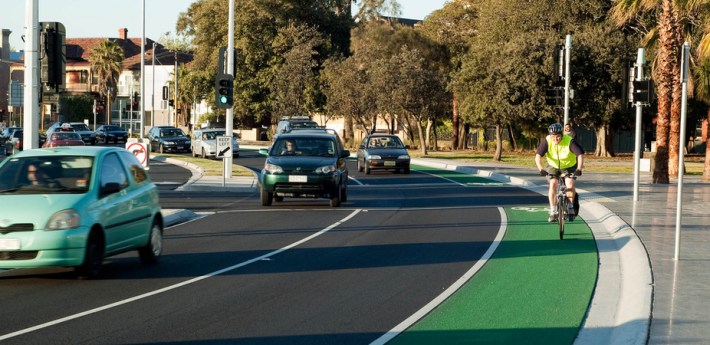This morning Andrew Sullivan highlighted a story in the Australian journal The Conversation that explains how the "macho" bike culture of the 1970s contributed to low cycling rates in that country and the United States as well.

The Conversation's Steven Fleming points to recent studies showing that streets with protected bike infrastructure are safer than streets without it. People prefer to ride in protected bike lanes as well. As feminist bike activist Elly Blue told Streetsblog recently, having to ride with traffic means that your city’s bicyclists will range “from the most fit to the least fearful.” But if you want to broaden cycling’s appeal beyond “one percent of the population,” you’ll have to make it safer and more comfortable.
But for years, influential American cyclists, almost out of a sense of pride, resisted protected bike lanes, Fleming writes:
Bike store owner John Forester was a keen “vehicular cyclist”. He could keep pace with cars, assert his right to a lane, and gracefully somersault onto the grass if ever a driver looked but didn’t see him. He published these tips in his 1976 book Effective Cycling, with some good intentions, but also a hint of male pride.
By the way he opposed the Dutch-modeled cycle tracks he feared would spread to the US, you could be forgiven for thinking his secret fear was being made to ride beside women and children.
Authorities throughout the Anglosphere nations where Forester’s book was read most were happy to listen to a male voice of cycling. There was no way though that Forester’s ideas were going to have sway with the Dutch.
Too many Dutch mothers were already active in the Stop the Child Murder rallies that began in 1973 after 450 children were killed on their bikes in one year.
The "vehicular cycling" movement that Forester helped spawn in the United States is thankfully waning. But we're still dealing with some of the results of resisting bike infrastructure: much lower cycling rates and much higher traffic fatality rates than countries like Denmark and the Netherlands.





